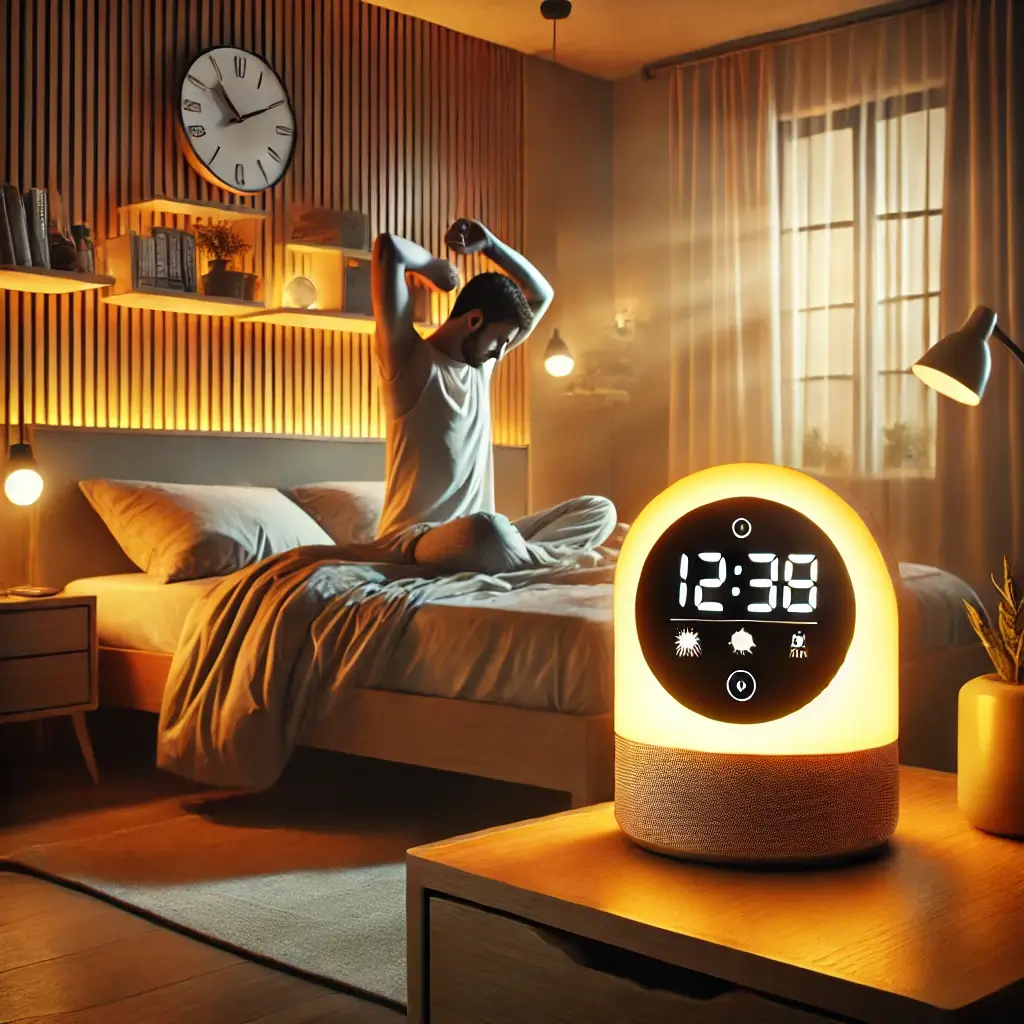The Evolution of Smart Sleep Technology
Technology has transformed nearly every aspect of modern life, and sleep is no exception. The advent of smart wake-up light alarms exemplifies how innovation can address age-old challenges, such as waking up groggy and unprepared for the day. Traditional alarms, with their abrupt and often jarring sounds, disrupt sleep cycles, leaving individuals feeling disoriented. In contrast, smart wake-up light alarms offer a science-backed solution, leveraging light therapy to facilitate a gentler transition from sleep to wakefulness.
Understanding the Science of Light and Sleep
These devices use gradually increasing light intensity to mimic a natural sunrise, promoting the biological processes that prepare the body to wake up. The science is rooted in the circadian rhythm, the body’s internal clock, which is influenced by environmental light cues. Advances in technology have enhanced these devices, integrating features like app connectivity, voice control, and customizable settings, making them not only functional but also versatile.
Technological Advancements in Modern Wake-Up Lights
Smart wake-up light alarms represent a blend of biological science and technological innovation. These devices utilize LEDs capable of emitting a spectrum of light that closely mimics natural sunlight. The gradual increase in brightness before the wake-up time stimulates the body’s production of cortisol while suppressing melatonin, preparing individuals to wake naturally.
Customization Features for Personal Comfort
Modern wake-up light alarms often include features like adjustable light intensity, soundscapes, and app integration. For instance, the Hatch Restore allows users to personalize their wake-up and wind-down routines through a mobile app, combining light therapy with soothing audio.
Smart Home Integration Capabilities
Devices like the Lenovo Smart Clock Essential offer compatibility with smart home systems, enabling users to control the alarm via voice assistants like Google Assistant or Amazon Alexa. This integration enhances user convenience and functionality.
Innovation in Light Technology
Recent innovations have focused on optimizing the light spectrum. Research indicates that warmer hues, such as orange and yellow, are more effective in regulating sleep-wake cycles compared to blue light, which can disrupt melatonin production. Leading brands like Philips have incorporated these findings into their product designs, ensuring their alarms provide optimal light therapy.
Enhanced User Experience Through Technology
Features like app-controlled settings, customizable brightness levels, and a variety of sound options cater to individual preferences, making the wake-up process more enjoyable and tailored.
Health Benefits of Smart Wake-Up Lights
By syncing with the body’s circadian rhythm, these alarms promote better sleep quality and morning alertness. Studies, including a 2015 publication in Behavioral Sleep Medicine, have shown that light therapy can improve mood and reduce sleep inertia, the grogginess experienced upon waking (Schreiner & Zhdanova, 2015).
Accessibility and Market Options
Smart alarms are increasingly affordable, with options ranging from basic models like the Lenovo Smart Clock Essential to premium devices like the Hatch Restore. This ensures a broader audience can access the health benefits of light therapy.
Market Leaders in Smart Wake-Up Technology
The smart wake-up light alarm market is rich with options, each catering to specific needs: Philips Wake-Up Light: A top choice for its high-quality light simulation and added features like nature sounds and FM radio. Hatch Restore: Combines light therapy with guided meditation and sleep sounds for a holistic approach to sleep health. Lenovo Smart Clock Essential: An affordable, smart-enabled device offering basic sunrise simulation and voice assistant integration.
The Future of Wake-Up Technology
Smart wake-up light alarms demonstrate how technology can enhance everyday life by merging innovation with a deep understanding of human biology. These devices not only make waking up more pleasant but also support overall health by aligning with the body’s natural rhythms. Advances in customizable features, smart home integration, and light spectrum optimization ensure these alarms are versatile and effective tools for modern users.
Final Thoughts on Smart Wake-Up Solutions
For anyone seeking a more refined wake-up experience, smart wake-up light alarms provide a practical and scientifically backed solution. With a range of models to suit different budgets and preferences, they are a valuable addition to a wellness-focused lifestyle.
Research Sources
Schreiner, I., & Zhdanova, O. V. (2015). Light therapy for improving sleep quality in healthy adults. Behavioral Sleep Medicine.
Cajochen, C., Frey, S., Anders, D., Späti, J., Bues, M., Pross, A., Mager, R., Wirz-Justice, A., & Stefani, O. (2019). Evening exposure to a light-emitting diode (LED)-backlit computer screen affects circadian physiology and cognitive performance. Frontiers in Neuroscience.
